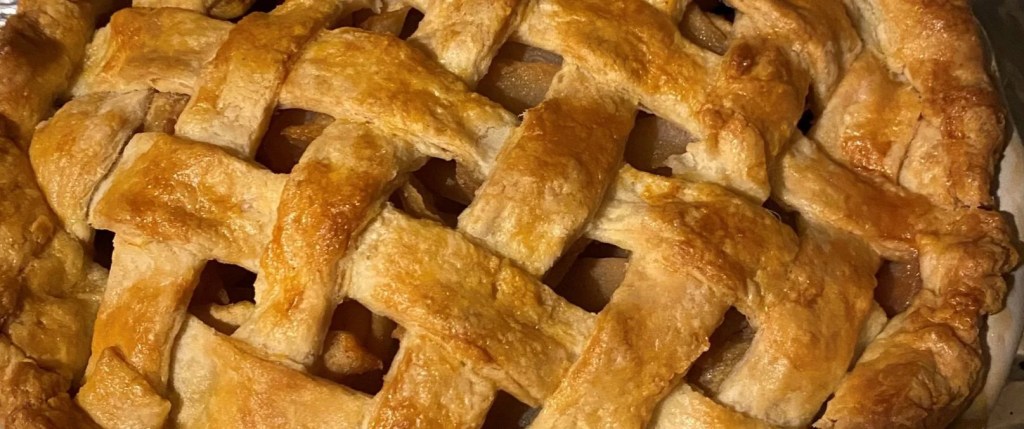Tipping our hat to the Thanksgiving holiday, today we review a patent application related to a method of preparing a dry dough mix suitable for use without kneading or fermentation, like for PIES! Such a thing is particularly relevant in preparing for Thanksgiving, as preparation time is limited. Being able to quickly and easily use refrigerated or frozen dough mix without kneading could mean the difference between a successful dessert or holiday catastrophe. Unfortunately for the inventor here, the PTAB ultimately finds the invention not patentable.
The case is Appeal 2021-000001, application 15/179,928. This is a continuation application that claims priority to an abandoned parent application. As mentioned above, the invention here focuses on how to prepare a dry dough mixture for use without kneading or fermentation. Claim 1 is reproduced below:
1. A method of preparing a dry dough mix suitable for use without dough kneading or fermentation, comprising the steps of:
combining a plurality of component ingredients into a free-flowing dry dough mix, wherein said component ingredients each are defined by dry, particulate materials;
wherein said component ingredients include at least flour, a chemical leavening agent, and at least one of a whole egg in a dry form and powdered butter;
finishing by impact mixing the dry dough mix so as to remove lumps in the dry dough mix, wherein after the step of finishing, the dry dough mix is useable to form a batter suitable for cooking within five minutes of an introduction of a hydrating agent solely without requiring kneading; and
wherein after said step of finishing, the dry dough mix is useable to form the batter while the dry dough mix is at a temperature in a range of between -10 degrees and 40 degrees
Fahrenheit.
In looking up the inventor online, it seems they have written at least one cookbook, for what that is worth:

Turning back to the application, there were several issues on appeal, including priority and obviousness. As to obviousness, the examiner combined numerous references but there was no mention of impact mixing in any of them. In the appeal brief, the applicant argued that the unique problem of preparing a dough commercially, which could then be shipped and placed in a freezer or refrigerator, was a unique problem not addressed by any of the cited art. The brief went on to explain as follow:

From the specification, there seems to be a clear distinction between regular home mixing and the commercial impact mixer.

Unfortunately, the PTAB read “impact mixer” broadly to include basically any mixing:
Although we agree with Appellant that “impact mixing” is defined in paragraphs 26 and 27 of the Specification as “something distinct from blending” (Appeal Br. 10), paragraph 27 of the Specification does not define “impact mixing” as requiring a commercial finisher (Reply Br. 5). When given its broadest reasonable interpretation in view of the Specification, we interpret “impact mixing” as including commercial as well as noncommercial electric mixers.
From there it was all over for this applicant – the prior art’s use of an “electric mixer” was enough. So unfortunately this Thanksgiving did not bring good news for our baker/inventor.
It is important to ensure that claims intending to have specific meanings are sufficiently specific to avoid the USPTO’s uncanny ability to broadly read limitations in unexpected ways. The above inferential relationship between commercial mixers, impact mixing, and conventional mixing was too undefined in the eyes of the PTAB.

Leave a comment